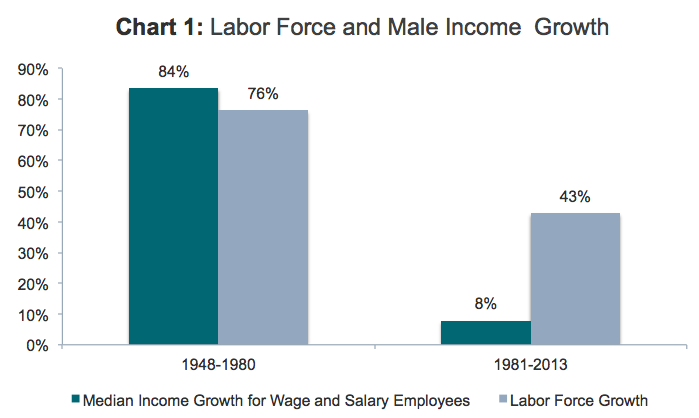EXECUTIVE SUMMARY
Many opponents of legal immigration argue that median income for men has stagnated since the 1970s because so many new workers are competing for jobs. Relative to the size of America’s workforce, however, fewer new workers—immigrants and natives—sought work in the United States since 1980. If Americans faced less competition for jobs from new job seekers, blame for lower incomes must lie elsewhere.
Immigration critics claim that wages cannot grow if the labor force is allowed to expand quickly. But history refutes this claim. From 1948 to 1980, the labor force grew by 76 percent, and median income for wage and salary workers shot up by over 80 percent for both men and women. In the following 33 years, the labor force grew just 43 percent—almost half the earlier amount—yet median income rose only 8 percent for men and 55 percent for women. Since new job-seeking has declined since 1980, new job seekers—foreign and domestic—cannot explain income stagnation.
The argument that immigrants hurt the middle class is as wrong in fact as it is in theory. Foreign workers complement American workers and help to raise wages. Even economists who are critical of certain types of immigration agree with the mainstream view that immigrants increase wages for Americans overall. Worse still, this faulty argument is a distraction from real impediments to income growth. Congress should reform the immigration system and focus on governmental barriers to prosperity.
Read the whole study: Immigrants and American Wages
